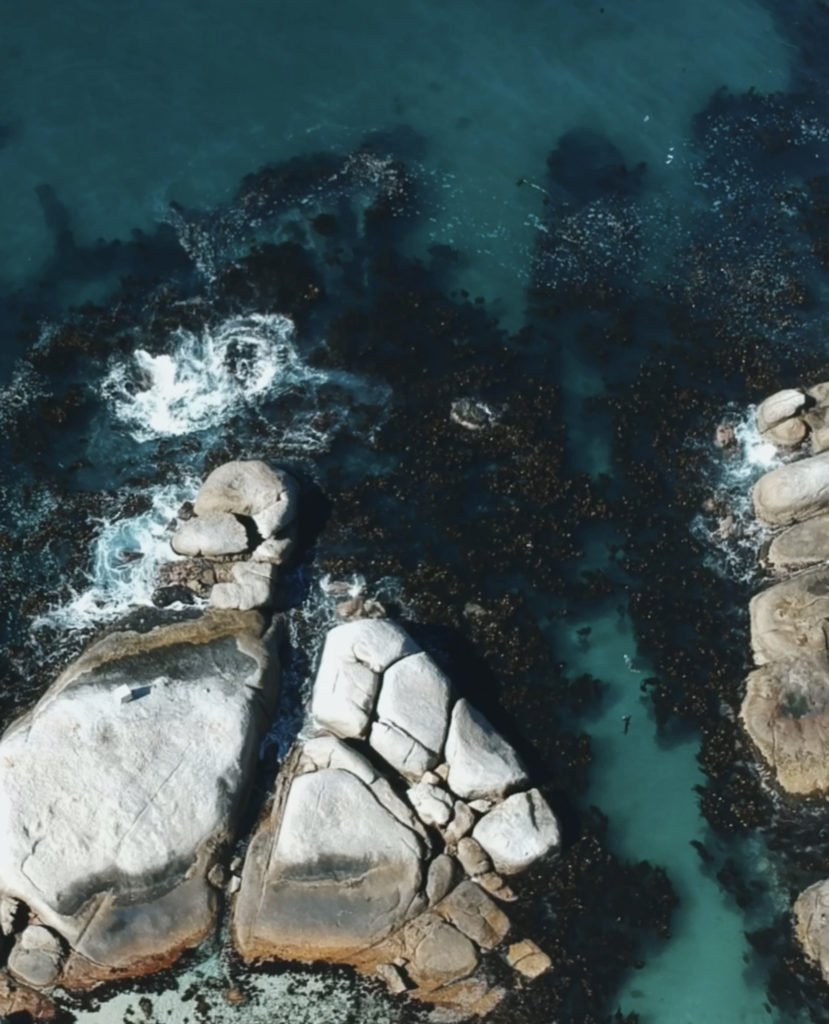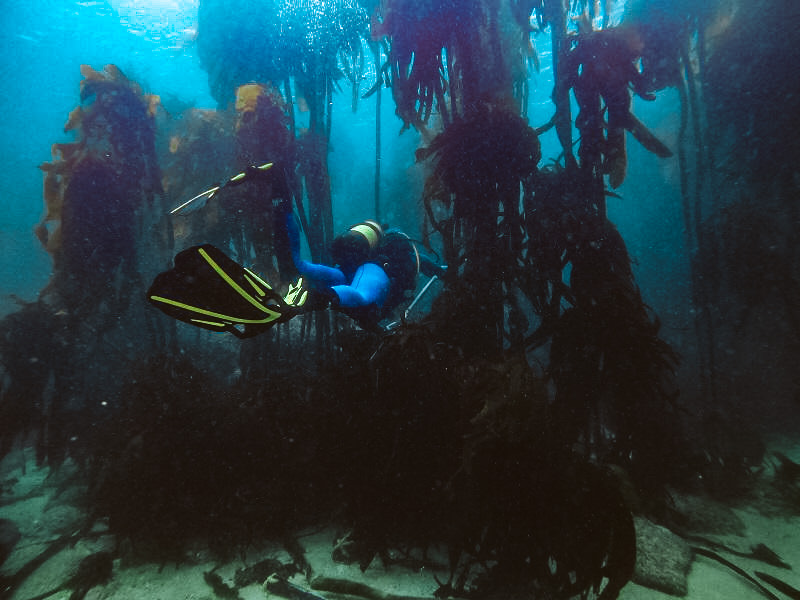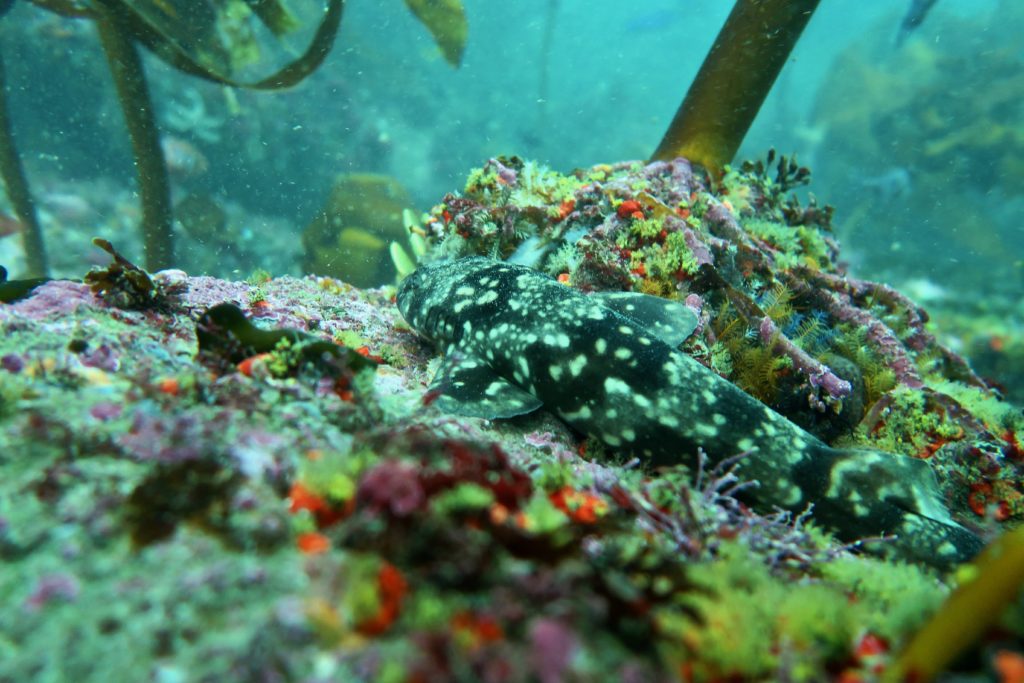Standing at shore, you have no idea a lush jungle lies ahead. The thick fronds of the kelp carpeting the surface only give a hint of the world below. We are about to enter the Great African Sea Forest, one of the Seven Wonders of the Natural World.

We ease on our mask and fins and slowly sink down into the bracing water, gliding across the sand bar toward Castle Rock.
And suddenly, there it is: the first kelp stand looms ahead, silently inviting us into the ghostly forest. We push our way through the golden fronds and tall stipes as we descend through the milky blue water to the rocky reef.

If a coral reef is a busy city, the African Sea Forest is a beautiful cathedral in the woods. Tranquil, sun-dappled and unhurried, the tall kelp sways in the endless motion of the tide.
A kelp forest reveals its secrets slowly to those who are patient enough to wait, watch and listen. The Cape’s tall bamboo kelp and shorter split fan kelp are home to an entire ecosystem, fish like the large Red Roman, silvery Hottentot, grazers like sea urchins, docile sea cucumbers, and filter feeders like limpets and mussels.
At the base is the holdfast, roots shaped a bit like a human hand, with an iron grip on the rock below it. Around it, you find a spiky crested super klipfish or a puff adder shark resting on the ocean floor. Rising from the holdfast, is the long stalk or stipe, often home to a lone cowrie or limpet, clinging to its vertical home.
At the top are the golden fronds, providing shade for the life below: shoals of sardines or anchovies, a limpet on the fronds, phytoplanktons and zooplanktons. In its shade far below, you might see a keenly intelligent octopus or cuttlefish out hunting. Nearby, the rocky walls of the reef play host to a blanket of vivid strawberry anemones, colourful, showy nudibranchs, a giant orange sponge, rock lobsters in a crevasse, and a sleepy blue ray resting on the sand in a shady nook under a rock.

All this life under its canopy make the kelp a keystone organism, critical to the survival of so many species. And unlike kelp forests in other areas of the world, the Great African Sea Forest is thriving and growing, make it one of the few areas of hope in the marine world.
This magnificent forest lines the temperate coast of southwest Africa, almost a thousand kilometres from the Cape Peninsula, all the way up to Nambia.
As we return from this magical world back to the sandbar and rocks at the shore, time seems to have slowed down ever so imperceptibly, and the peace you gain from your time in the kelp stays with you. There’s no doubt about it, this place has soul.
0 Comments